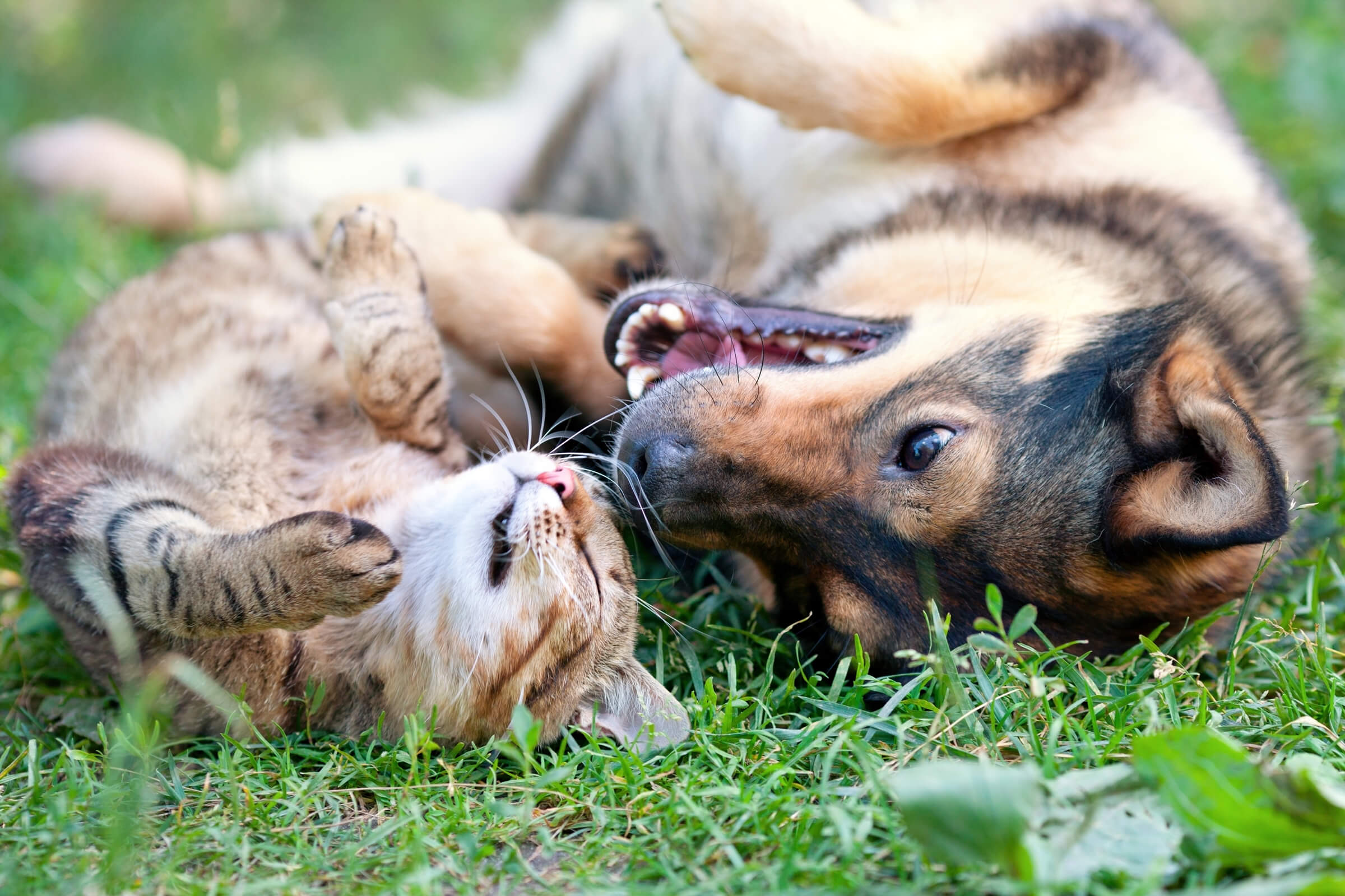
 Menu
Menu
Hip luxation

What is Hip luxation?
Luxation is the medical term for dislocation. In this condition the hip dislocates. Cats and dogs can both be affected. In most cases, the head of the femur, the ball part of the ball and socket joint, moves upwards and forwards (craniodorsal) relative to the acetabulum (the socket) but in a small number of cases the femoral head can move down and backwards (caudoventral).
What causes hip luxation?
This condition is often trauma related, such as following a road traffic accident. The force needs to be strong enough to rupture the ligament within the joint and the joint capsule so significant trauma has usually occurred when this condition is diagnosed.
However, in some cases, hip luxation can develop as a result of underlying hip disease, namely hip dysplasia. The joint becomes so lax that the hip dislocates. In some small breed dogs, typically poodles, spontaneous luxation can occur with no obvious underlying pathology.
What are the signs of hip luxation?
The most common sign is limping on a back leg. The limp is usually severe with the patient often non-weight bearing. The stifle (knee) can be externally rotated with a craniodorsal luxation or internally rotated with a caudoventral luxation. As a result the position of the foot is also altered.
Diagnosis
During a clinical examination, the top of the femur is assessed as the position can alter. With the most common type of luxation, craniodorsal, the top of the femur is shifted upwards which can be straightforward to palpate. With caudoventral luxations the top of the femur moves lower than normal. In traumatic cases we would often expect the position of the femur to alter. In spontaneous cases or when hip dysplasia is present, this may be less obvious. A definitive diagnosis may require further assessment such as assessment under sedation / anaesthesia and radiography (x-ray).
Radiography can show the hip to be dislocated. Other diseases or bony damage can also be assessed for with x-ray.
Hip luxation treatment
Non-surgical / conservative management
It is rare that this would be recommended. Some cases with chronic luxation can function reasonably on a luxated hip although this situation is very uncommon. Pain is usually a significant factor requiring further treatment.
Surgical
- Closed Reduction
Reduction is where the hip joint is relocated into the correct position. Closed reduction is where the patient is anaesthetised and the femoral head is placed back into the acetabulum (ball back into the socket) without performing surgery. The hip is manipulated back into position. This can prove very effective in some cases but in others the hip will re-dislocate. If the hip joint cannot be maintained in position, surgical treatment should be pursued.
- Open Reduction and Stabilisation
If the hip joint cannot be reduced in a closed fashion or if the hip tends to re-dislocate, then open reduction will be required. A surgical approach to the hip is performed and the hip joint can be assessed to see what damage has occurred. Sometimes the hip will not stay in place as there is tissue debris in the acetabulum (socket). This tissue can be cleared during surgery.
Once the hip is reduced back into position, the femoral head needs to be held in the acetabulum until the soft tissues around the joint heal which will provide long term stability. There are several ways in which this can be achieved but here are a few examples:
- Capsulorrhaphy – this is where the joint capsule is repaired which may be enough to hold the hip in position.
- Trans-articular pin – this is where a pin is temporarily placed across the hip joint to maintain reduction whilst the soft tissues heal. The pin is then removed at a later date.
- Toggle procedure – this is where a toggle is placed through the pelvis and this is used to anchor the femoral head into the acetabulum using a suture through a bone tunnel. This holds the hip in position and the toggle implant can be left in place.
- Iliofemoral suture – this is where a suture is placed from the pelvis to the femur which holds the hip in place. This is outside the joint (toggle procedure is inside). This holds the femur in an unusual angle and the stifle will be inwardly rotated. This is to prevent re-dislocation but eventually the suture will fail and by this point healing of the soft tissues should be advanced enough to allow a good outcome. When the suture fails (typically 3-4 weeks) the limb position will become more normal.
The main complications are:
- Re-luxation
- Infection – rare
- Pin or other implant migration
- Implant failure – early breaking of the suture or pin.
Surgical salvage procedures
These are reserved for cases where the normal hip anatomy is damaged beyond repair and therefore the hip joint is removed.
- Total hip replacement (THR)
This is a technique where the hip joint is removed and replaced using a metal ball and plastic cup. This is a technically very demanding procedure and should only be performed by experienced orthopaedic surgeons. Due to recent developments in the implant technology this procedure can be performed on patients as large as Great Danes and as small as Chihuahuas. This procedure can also now be performed in cats. The success rate for THR is approximately 90% and most dogs are more comfortable within a few days of surgery. We expect most dogs to return to full activity assuming there are no complications.
- Femoral head and neck excision (FHNE)
This procedure involves removal of the hip joint and a false hip joint is allowed to develop from scar tissue. This procedure can be used where THR is not a viable option such as for financial reasons or variations in individual anatomy that preclude THR. Most patients undergoing this procedure will be left with a limp or gait abnormality but pain relief is usually satisfactory to improve the quality of life. Physical therapy can help maximise limb function for these patients.
Stay in touch
Follow us on social media and keep up to date with all the latest news from the MVS clinic.



